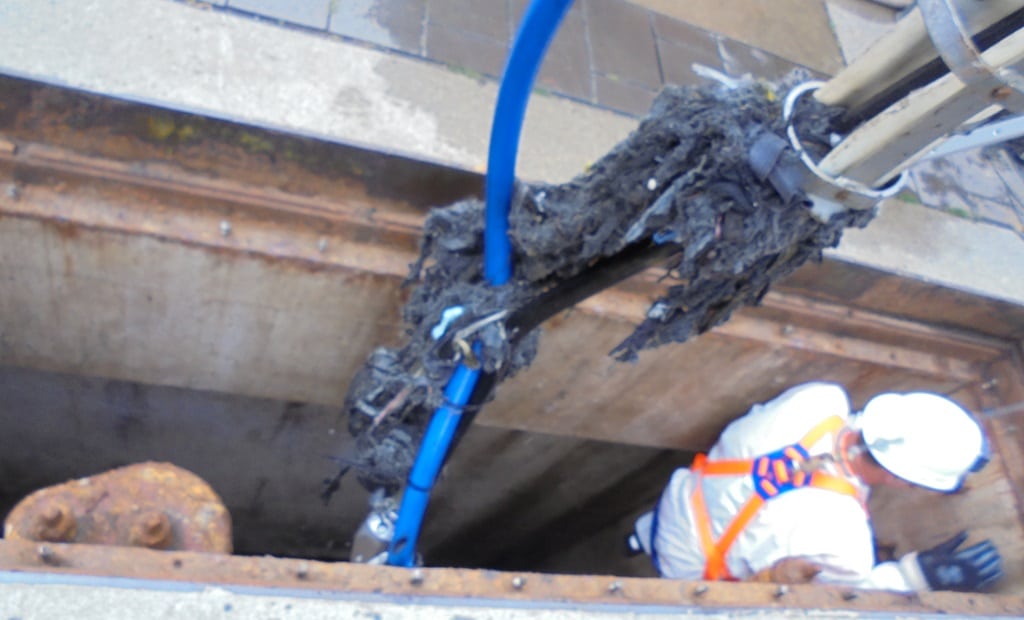comprex® - The mechanical cleaning with air and water
Upgrading blocked culverts
Comprex pulses can be fed through a PE pipe into blocked, water-filled culverts until they are deposited. The blockages are often so stubborn that a flushing vehicle with a high-pressure flushing lance is required. However, a flushing vehicle alone cannot remove the mobilized particles. The combination of flushing vehicles with Comprex technology makes it possible to upgrade and clean blocked culverts in a short space of time.

Cleaning blocked culverts with comprex®
Canals sometimes have to cross rivers or traffic routes. Culverts serve this purpose. In contrast to gravity sewers, these culverts are always full. Deposits can build up over time and reduce the culvert cross-section. However, particles of various grain sizes, debris, grit and other particles that are not disposed of properly in the wastewater are particularly critical in culverts. While debris leads to erosion in the invert area of the culvert, bulky parts together with wet wipes can cause blockages.

In contrast to short culverts, long culverts can no longer be cleaned using conventional methods. Although the flushing vehicles commonly used to clean sewers have the power to remove deposits and blockages, they do not generate sufficient transport medium to remove the mobilized particles. In most cases, full and blocked culverts cannot be opened. The blockages are preferably located at low points under the river or traffic route. In tunnels, culverts for wastewater are usually installed with other pipes, e.g. drinking water pipes or cable strands. Here the culvert is accessible from the outside and can only be opened if appropriate devices are installed, which is not normally the case. Opening a culvert filled with wastewater is prohibited because wastewater must not run into the tunnel.
A simple solution to this task is to combine the flushing vehicle with Comprex technology. An appropriately dimensioned PE pipe is connected to the high-pressure flushing lance of the flushing vehicle. Through this PE pipe, compressed air pulses from the Comprex unit can form air and water blocks at the blockage with the existing waste water. This allows the detached particles to be reliably discharged.


Experience to date
There are several culverts under the Rhine and Moselle in Koblenz.
There, a blockage in the DN 500 wastewater pipe in the Rhine culvert tunnel led to an emergency situation. A combination of high-pressure flushing vehicle and Comprex technology brought the breakthrough. A PE pipe with a flushing nozzle made it possible to remove deposits such as boards and stones. This method proved to be successful and shows potential for future maintenance concepts for wastewater culverts that are difficult to access.
The experience of clearing a blockage has been documented and published:
The following photos document the discharges from the wastewater pipe:









